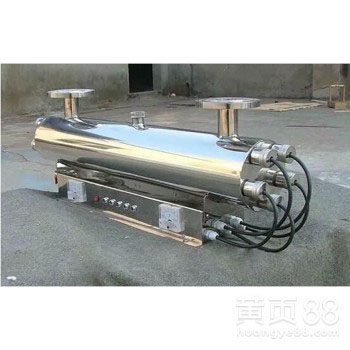Ultraviolet disinfection equipment




[Product Introduction]
The ultraviolet wave band is mainly between 200 and 300, with the bactericidal ability of 253.7 nm. When various bacterial viruses in water or air pass through the ultraviolet ray (253.7nm wavelength) irradiation area, the ultraviolet ray penetrates the cell membrane and nucleus of microorganisms, destroys the molecular bonds of nucleic acids (DNA or RNA), making them lose their replication ability or activity and die, thus killing all bacterial viruses in water or air without using any chemical drugs. Ultraviolet disinfection and sterilization technology is a new generation of disinfection technology rising at the end of 1990s. It integrates optics, microbiology, electronics, hydrodynamics and aerodynamics. It has the characteristics of high efficiency, broad-spectrum, low cost, long life, large water volume and no secondary pollution. It is internationally recognized as the mainstream anti-virus technology in the 21st century.
[Technical Advantages]
1. High efficiency bactericidal UV can kill bacteria and viruses with a bactericidal rate of 99% - 99.9% in one to two seconds.
2. High efficiency broad-spectrum ultraviolet sterilization is broad-spectrum. It can effectively kill almost all bacteria and viruses.
3. No secondary pollution Ultraviolet sterilization does not add any chemicals, so it will not cause secondary pollution to the water body and the surrounding environment. It does not change any component in the water.
4. If chloride or ozone is used in the safe and reliable traditional anti-virus technology, the disinfectant itself is a highly toxic and flammable substance. The use of these substances may pose a potential threat to the safety of operators, the surrounding environment and residents. However, there is no such hidden danger in the ultraviolet disinfection system.
5. The operation and maintenance costs are low. The ultraviolet sterilization equipment occupies a small area, and the structure requirements are simple, so the total investment is small. The operation cost is also low. At the level of thousand tons of water treatment capacity, its cost is only 1/2 of chlorine disinfection.
6. At present, the ultraviolet disinfection technology has reached the daily treatment of 2 million tons of water in practical application, which can be even greater if actual needs are met. This is difficult to achieve by chlorine addition and dechlorination and ozone disinfection methods.
7. The ultraviolet sterilizer adopts the world leading low-voltage and high-strength ultraviolet lamp, and the service life of the lamp is guaranteed to be more than 12000 hours. The casing is made of high-purity quartz material to ensure that the ultraviolet ray transmission is above 90%.
8. Stabilizer with stable operation Ultraviolet sterilizer adopts world advanced electronic ballast, which can ensure the normal operation of the whole system.
[Function Features]
Small energy loss, high efficiency, automatic adjustment of UV light output, good heat dissipation design, high average failure free rate, high output stability to ensure the long life of the lamp and easy maintenance
Ultraviolet disinfection equipment for drinking water: high-efficiency UV-C (LL or LH) ultraviolet lamp is selected, and the inner wall of the reactor is specially polished to improve the sterilization effect. JG series sterilizer is suitable for treating domestic drinking water (POE, POU) and removing bacteria, viruses and other microorganisms in water. The equipment is designed according to NSF TITLE No. 55 standard of the United States, and its effective dose is above 99.9%.
In order to improve the sterilization effect and ensure the safety of drinking water, the inlet water of the sterilizer shall meet the following standards: (exceeding the following standards will affect the sterilization effect)
Water hardness < 7GRANS
Total iron content < 0.3ppm
Hydrogen sulfide < 0.05ppm
Total suspension < 10ppm
Manganese content < 0.05ppm
Turbidity < 5NTU
Chromaticity: no color difference < 15
PH value 6.5 - 9
[Scope of Application]
Food processing, hospitals, various laboratories, domestic water, swimming pools, water entertainment facilities, ultrapure water for electronic industry, seawater, freshwater breeding water, etc


